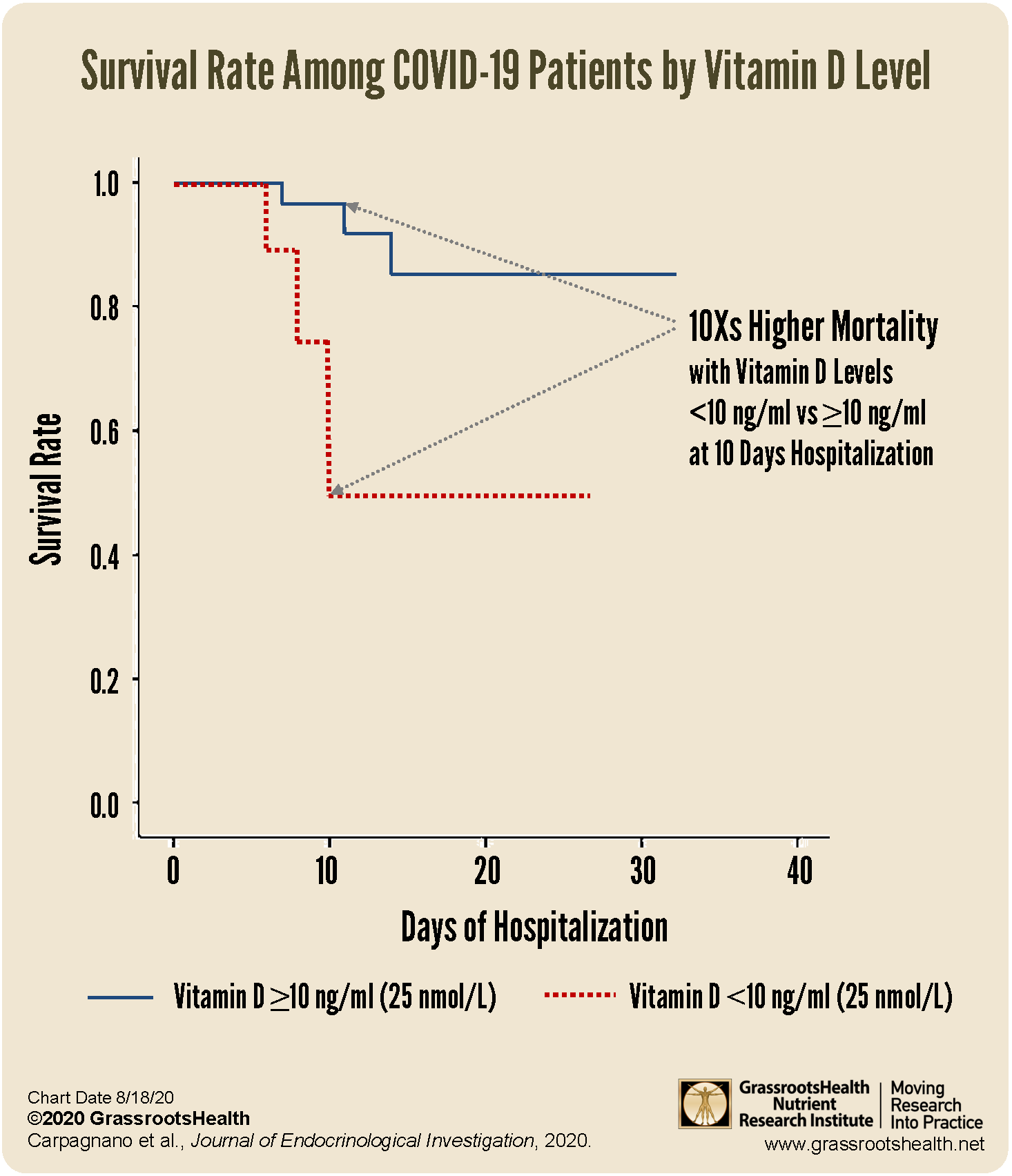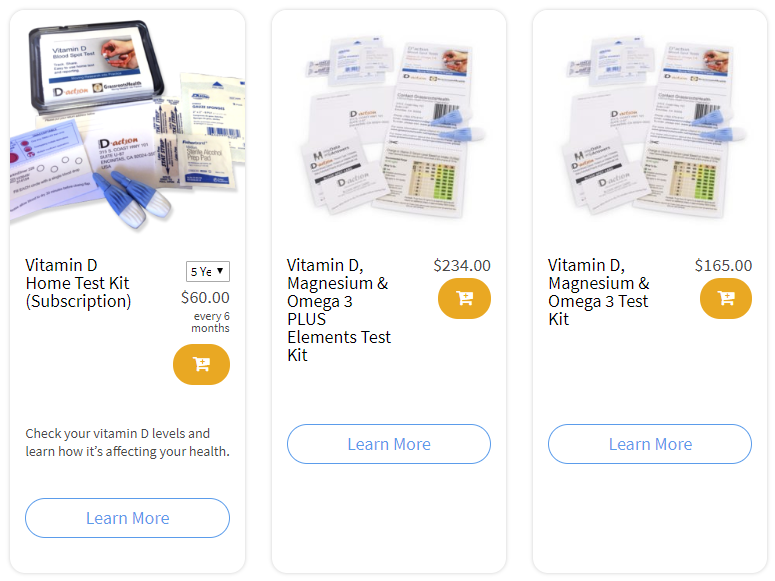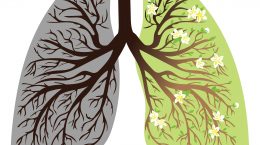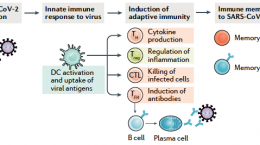Published on August 19, 2020
Vitamin D plays many very important roles in immune health, including immune and inflammation modulating functions directly within the lungs. Cellular models have demonstrated the direct effect of vitamin D deficiency on the tissues within the lungs, which include increased alveolar inflammation, lung epithelial damage, and hypoxia (the deprivation of oxygen to surrounding tissues). One such result is Acute Respiratory Distress Syndrome (ARDS, aka wet lung), a condition resulting from severe respiratory injury or illness, and a major complication and cause of death among those with serious COVID-19 infections.
 Many studies are being published showing an association between low vitamin D levels and increased risk and severity of COVID-19 disease. Some studies among vitamin D deficient COVID-19 patients have also shown improvement in symptoms and survival rates with vitamin D supplementation, indicating that replenishing vitamin D is helpful for improving COVID-19 disease outcome. Current available data suggests that avoiding or correcting vitamin D deficiency at any point during the COVID-19 pandemic may improve outcomes overall. Regardless of the circumstances, if something important for health is ever found to be deficient, shouldn’t that deficiency be corrected in any case?
Many studies are being published showing an association between low vitamin D levels and increased risk and severity of COVID-19 disease. Some studies among vitamin D deficient COVID-19 patients have also shown improvement in symptoms and survival rates with vitamin D supplementation, indicating that replenishing vitamin D is helpful for improving COVID-19 disease outcome. Current available data suggests that avoiding or correcting vitamin D deficiency at any point during the COVID-19 pandemic may improve outcomes overall. Regardless of the circumstances, if something important for health is ever found to be deficient, shouldn’t that deficiency be corrected in any case?
81% of COVID-19 Patients with Acute Respiratory Failure Had Vitamin D Levels Below 30 ng/ml (75 nmol/L)
A study recently published by Carpagnano et al. looked at data from 42 hospitalized patients in Italy who had been diagnosed with acute respiratory failure due to COVID-19. Vitamin D levels were measured for each patient and were defined as insufficient (20-29 ng/ml or 50-74 nmol/L), moderately deficient (10-19 ng/ml (25-49 nmol/L), and severely deficient (<10 ng/ml or <25 nmol/L). A normal vitamin D level was defined as 30 ng/ml (75 nmol/L) or higher.
81% of the patients with acute respiratory failure due to COVID-19 had vitamin D levels below 30 ng/ml (75 nmol/L); and 24% had severe vitamin D deficiency (≤10 ng/ml or ≤25 nmol/L). When looking at mortality rates after 10 days of hospitalization, it was found that those with severe vitamin D deficiency had a 50% probability of death, compared to 5% among those with a vitamin D level greater than 10 ng/ml (25 nmol/L).
This is a 10 times higher risk of death among patients with severe vitamin D deficiency compared to patients with vitamin D levels >10 ng/ml (>25 nmol/L) at 10 days of hospitalization.
Conclusion by the Study Authors
Carpagnano et al. made the following conclusion:
“Altogether, these considerations support the recommendation that people at risk of influenza and/or COVID-19 consider vitamin D supplementation to raise their 25(OH)D concentrations above 40–60 ng/mL, and that treatment of patients infected with influenza and/or COVID-19 includes higher vitamin D doses.”
Protect Your Immune Health by Avoiding Vitamin D Deficiency!
Your vitamin D level matters! In fact, one study showed an almost 60% increased risk in COVID-19 infection for individuals whose vitamin D level was below 30 ng/ml (75 nmol/L) compared to individuals whose vitamin D level was 30 ng/ml or higher. The same study also found that among the COVID-19 positive individuals, there was an almost doubled risk of hospitalization for those whose vitamin D levels were below 30 ng/ml. Ensure your vitamin D and other nutrient levels are within range! Help support a healthy immune system and more by testing today to find out your level of vitamin D and other nutrients important for a healthy immune response.
Are You Getting Enough Vitamin D to Help Yourself?
We’re in a time of great crisis that could be greatly affected by making sure you and everyone you know has a serum level of at least 40 ng/ml. Help us help you.
Do you know what your vitamin D level is? Be sure to test today to find out, and take steps to keep it within a target of 40-60 ng/ml or 100-150 nmol/L! Give your immune system the nutrients it needs to support a healthy you and protect yourself from unnecessary diseases.
GrassrootsHealth Nutrient Research Institute is preparing to do a Community RCT with the use of our myData-myAnswers nutrient health system that over 15,000 people are already using for their health. We will demonstrate how one can use the Nutrient Research Model established by Dr. Robert Heaney to establish the effect of vitamin D serum levels of at least 40 ng/ml (100 nmol/L) on risk reduction with different ethnicities in the population. Please let us know if you’re interested in helping sponsor this project.
CLICK HERE for updates and new information about the project.
Through GrassrootsHealth Nutrient Research Institute, you can also test your essential elements magnesium, copper, zinc and selenium, toxins such as lead, mercury and cadmium, as well as your omega-3 levels, inflammation levels and thyroid stimulating hormone (TSH) level. Find out your levels today! Log on to the test selection page (click the link below) to get your tests and see for yourself if your levels can be improved.
Make sure you track your results before and after, about every 6 months!
Click Here to Access the Test Page
How can I track my nutrient intake and levels over time?
To help you track your supplement use and nutrient levels, GrassrootsHealth has created the Personal Health Nutrient Decision System called
For each specific supplement, you can track what days you take it, how much, and many other details. This will help you know your true supplemental intake and what patterns of use work for you to reach and maintain optimum nutrient levels. Check it out today!









